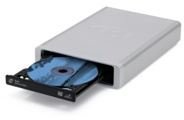What to Do if the Cd Drive in a Mac Won't Read Discs
Optical Discs are Everywhere
We have become more and more reliant on optical discs over the years, even as their most common use – the storage of movies, music and games – has decreased in favor of direct digital downloads. Instead of purchasing pre-packaged products, we now tend to use CDs and DVDs for storing our own data, with home-made photo discs, video discs, demo disks and more all easily compiled and burned to a suitably-sized medium in Mac OS X.
Additionally, optical discs are also used as a data backup solution, one that might seem quite useful and versatile but is, as we will see, particularly dangerous if you valued the continued existence of your archived data. Optical discs simply aren’t as tough as we were once led to believe.
There are various reasons why your optical media may fail, from problems with the discs or optical drive or even your Mac itself…
Image credit: Wikimedia Commons/Wanted
Do Other Discs Work?
Problems reading discs in the CD/DVD drive on your Mac can be difficult to diagnose at first. After ensuring that the disc is clean, the best way of getting to the bottom of the problem is to swap discs, possibly finding some that you know will work and then working out whether or not the problem is with the disc or the disc drive.
You can also try reading the troublesome disc on another device, such as a domestic DVD drive or a different computer (perhaps even a Windows PC in the case of an audio, picture or video disc).
The aim here is to establish whether or not the problem is with the disc that you’re trying to read, or with your Mac’s disc drive. If the fault lies with the disc, then the data on it could be lost forever. See the section below on more information on why some discs fail. Meanwhile, if the problem is the drive, then this can probably be resolved, although it might require you to purchase a new device or take your Mac into your local Apple store.
Optical Disc Decay
Compact discs have been in use since the mid-1980s, while DVDs have been around since the mid-1990s. Each of these popular optical storage media feature a similar manufacturing process, once which has been proven in recent years to result in less resilient storage of data than previously indicated.
Basically, even the most well-looked after, scratch-free optical disc can become damaged, thanks to the methods used in manufacturing. The metallic layer where the data is stored is susceptible to peeling away from the base plastic of the disc, which means that using optical discs as a long-term storage solution is not a good idea.
However, it seems that there is another threat, this time from nature itself. It has been shown that older optical discs (for instance CDs purchased in the 1980s) are susceptible to a fungus that causes the metallic layer to decay. As the layer decays, so does the data, and this can result in discs that cannot be read by a Mac CD drive.
You can easily spot a disc that has decayed (either through nature or poor manufacturing) by holding it up to the light; if light comes through any gaps in the metallic layer then your data is either lost or at risk.
Is the Disc Drive Correctly Connected?

Hardware reasons for your Mac CD/DVD drive refusing to read discs are common. For instance, you might have an external optical drive connected but problems with the USB cable could be causing poor data transfer – in this case, replace the USB cable. There might also be a general compatibility issue with Mac OS X, so if you suspect this to be the case, try connecting the drive to a Windows computer and checking whether it works there; if so, contact the device manufacturer or visit their website for upgraded device drivers.
Similarly, problems with the internal drive in your Mac could possibly be narrowed down to connectivity issues, and in cases such as this you should take your device to a local branch of Apple and have one of the Genius staff take a look at it. Be prepared to demonstrate the issue as you have experienced it so far, and they will take the necessary steps to resolve the issue.
Image credit: https://apple.com
Optical Discs in Older Macs
Some disc issues could be caused by compatibility problems between the type of disc in use and the type of optical drive in your Mac. Older iMacs, for instance, will only read a certain type of DVD. Clearly this can prove frustrating if other types of disc can be read without a problem, but if you find that this is an issue then the best course of action will be to either have the data copied to a different type of disc or employ an external CD or DVD drive that will then enable you to read and write to any type of optical storage.
Similarly, 3 inch CDs and DVDs cannot be used in slot-loading Macs without CD trays, as these are only designed for use with traditional 5 inch optical discs.
References
Author’s own experience.
